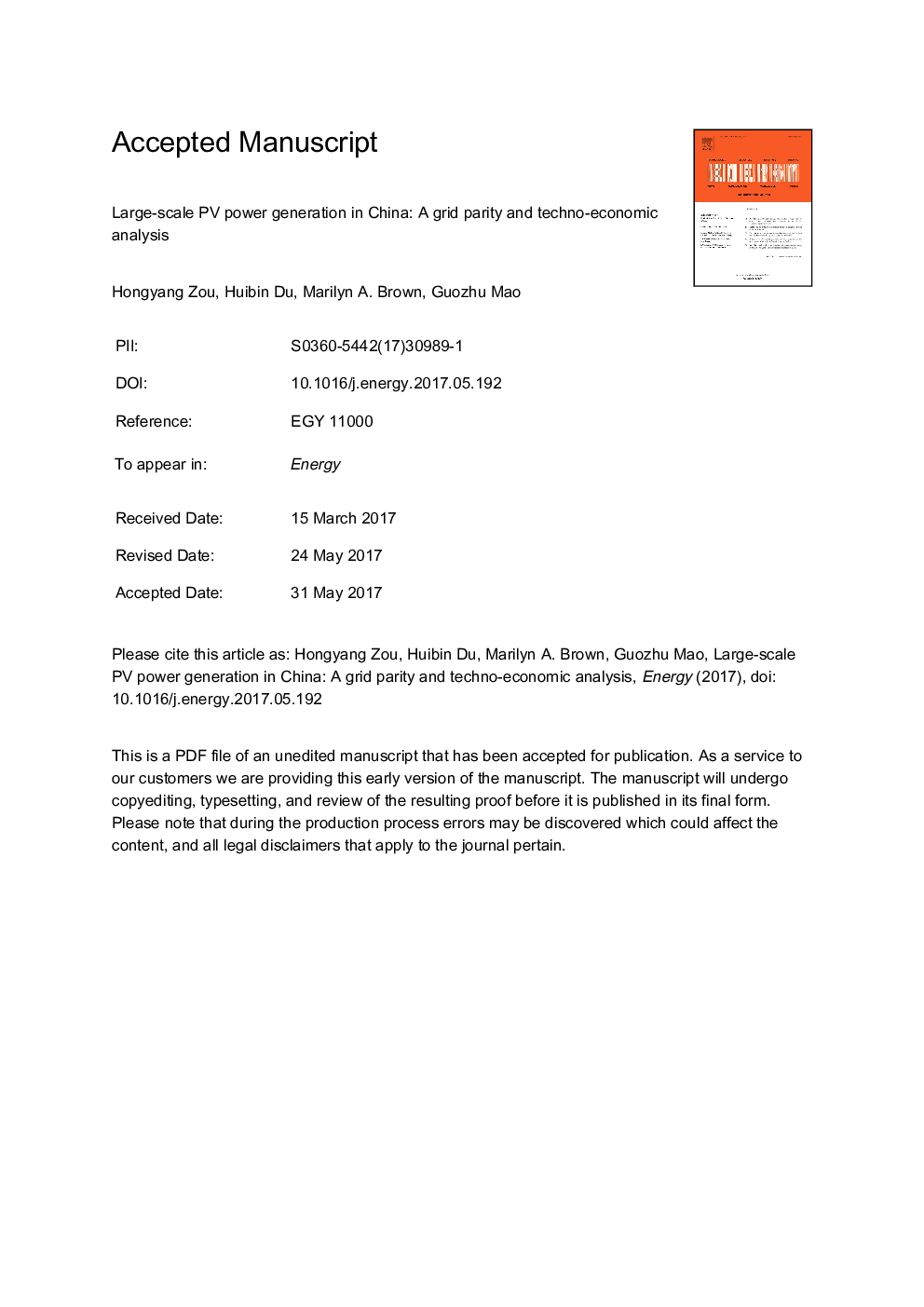| Article ID | Journal | Published Year | Pages | File Type |
|---|---|---|---|---|
| 5475829 | Energy | 2017 | 59 Pages |
Abstract
With the limiting supply of fossil fuel and the beneficial impact of technological innovation on renewable energy costs, PV power generation is increasingly considered a promising way to generate renewable power. Under the support of the national emerging industry, China's PV industry has experienced a dramatic development over recent years, catapulting into a vital position in the world PV market. The newly installed PV capacity has led to cost reductions. This paper chooses the methodology of techno-economic evaluation to analyze current market application of residential PV power generation, including grid-connected and off-grid systems. One of the main innovations is choosing five Chinese cities in different areas of solar radiation as research objects, which enables regional differentiation in calculating levelized cost of energy (LCOE). The results show that grid-connected PV systems with 3Â kWÂ PV modules can meet the electric demand of a 60-90Â m2 residential building. The capacity of off-grid systems are 5-10Â kW, which is determined by local solar radiation. By incorporating a learning curve, we forecast that off-grid PV systems for each of the five cities will reach grid parity over the next several decades. The estimation is used to offer policy recommendations for PV market diffusion in China.
Related Topics
Physical Sciences and Engineering
Energy
Energy (General)
Authors
Hongyang Zou, Huibin Du, Marilyn A. Brown, Guozhu Mao,
